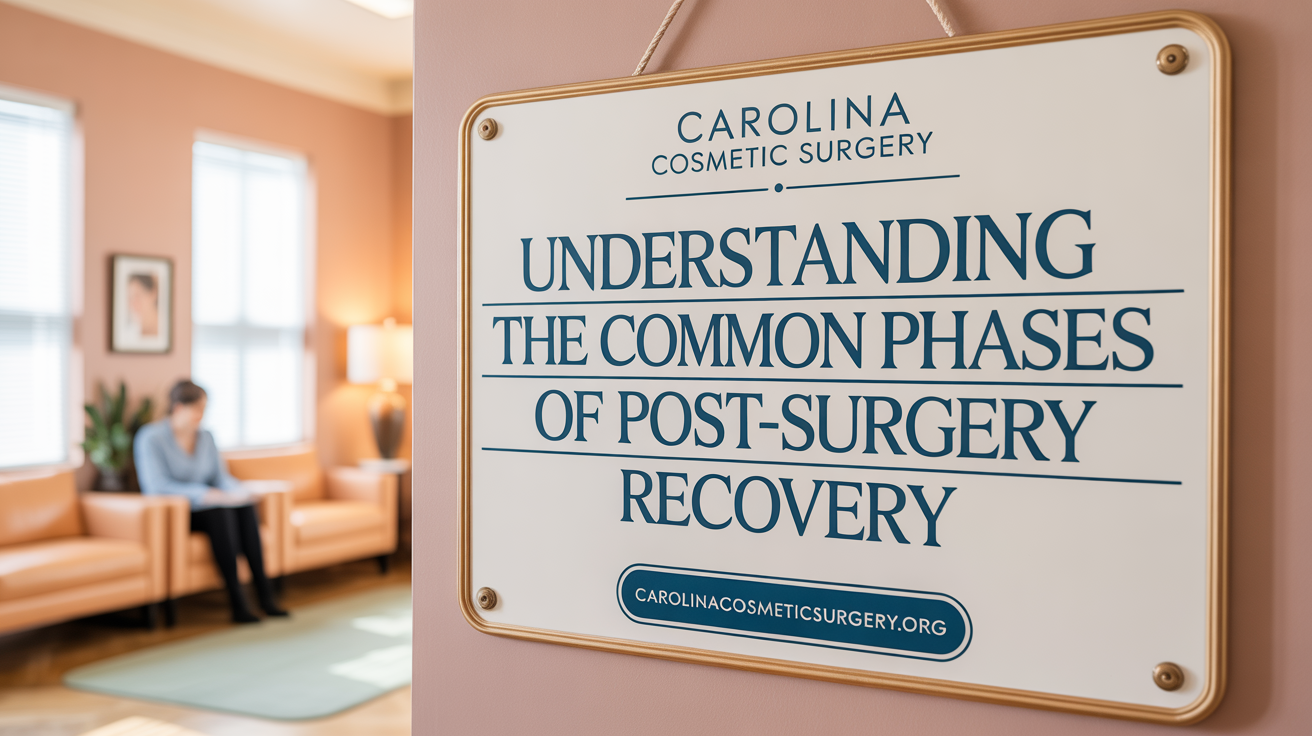Navigating Your Recovery Journey
Breast surgery—whether augmentation, reduction, or reconstruction—marks a significant step toward personal health or aesthetic goals. Understanding the healing timeline and what to anticipate at each stage can empower patients to manage expectations and care for themselves effectively during recovery. This guide breaks down the typical recovery phases, factors influencing healing, and practical tips to promote optimal outcomes.
Typical Recovery Timeline After Breast Surgery

What is the typical recovery timeline after breast surgery?
Recovery from breast surgery is a step-by-step process that varies based on the individual and the specific procedure performed. Generally, patients begin to notice improvements within the first one to two weeks.
Immediately after surgery, during the first 24-48 hours, patients usually experience soreness, swelling, and bruising. Rest and hydration are vital, and limited mobility helps promote healing. Pain medications are often prescribed to manage discomfort.
In the first week, most patients are advised to rest, wear supportive garments (like compression bras), and avoid strenuous activities. Light walking is encouraged to promote blood flow and reduce swelling. Many are able to return to non-physical work within this period.
Between weeks 2 and 6, symptoms such as swelling and bruising decrease significantly. Breasts become softer, and implants settle into their eventual position. Patients can gradually resume more activities, but heavy lifting and vigorous exercise should still be avoided during this time.
By the 6-week mark, most swelling has subsided, and the breasts look more natural. Patients often can reintroduce more intense workouts, but should follow their surgeon’s guidance.
The full healing process, where residual swelling diminishes, the shape stabilizes, and the implants settle, can take around 6 months. Final results—including the natural appearance and feel of the breasts—become evident after this period.
Throughout recovery, prioritizing proper post-operative care—such as wearing support bras, following wound care instructions, and avoiding activities that strain healing tissues—is essential for a smooth and successful recovery. Adhering to these guidelines can help reduce complications and enhance the final aesthetic results.
Stages of Healing in Breast Surgery Recovery

What are the common stages of healing after breast surgery?
Recovery from breast surgery involves several distinct phases, each with unique healing milestones. Immediately after surgery, patients typically experience swelling, bruising, pain, and tightness. This period requires rest, pain medication, and support garments to help reduce swelling and promote healing.
During the first 1-2 weeks, swelling and bruising are most evident. Patients are encouraged to start gentle walks to improve blood flow and prevent complications. Follow-up appointments are crucial during this time to monitor wound healing and remove stitches if necessary.
From around 3 to 6 weeks post-surgery, swelling decreases significantly, and tissues begin to settle. Patients can usually resume routine activities and light exercises, but should avoid heavy lifting or strenuous workouts. The breasts start to soften and shape more naturally, with nipples gradually migrating to higher, more natural positions.
Over the next several months, additional softening occurs, and the implants or tissues settle into their final positions. Scar tissue formation begins, and scars mature, fading over time. Wearing compression garments and scar treatments can aid in minimizing scar visibility.
By 3 to 4 months, most patients see the final contours develop, with improved symmetry and natural feel. Complete scar maturation and tissue settling may continue up to 6-9 months after surgery, revealing the most lasting results.
Maintaining a healthy diet, avoiding excessive salt intake, and adhering to medical advice for activity restrictions support optimal recovery. Overall, patience and consistent aftercare are essential for achieving the best long-term outcomes.
| Recovery Stage | Typical Timeframe | Physical Changes | Recommended Activities | Notes |
|---|---|---|---|---|
| Immediate Post-Op | 1-2 days | Swelling, bruising, tightness | Rest, support garments, gentle movement | Watch for complications, follow surgeon’s guidance |
| Subacute Healing | 1-6 weeks | Decreasing swelling, tissue softening | Resume light activities, attend follow-up visits | Avoid strenuous exertion, heavy lifting |
| Long-Term Healing | 2-9 months | Scar maturation, tissue settling | Gradual return to full activities, scar care | Final result visible, scars fade over time |
This phased approach highlights the importance of tailored care and timing, ensuring each patient progresses through recovery safely and effectively.
Post-Operative Recovery Expectations by Surgery Type

What can be expected during the post-operative recovery process after breast augmentation, reduction, or reconstruction?
The recovery journey varies slightly depending on the type of breast surgery performed, but some common experiences are shared across procedures.
For breast augmentation, patients typically rest the first week, with swelling, bruising, and soreness being common in the initial days. Implants appear high and compressed immediately after surgery, and the breasts are very firm and tight. Supportive bras, such as athletic or surgical bras, are recommended during this time. Swelling and discomfort usually improve within 3-4 months, and the breasts gradually soften and settle into a more natural shape.
In breast reduction surgery, pain, swelling, and bruising may be significant initially but tend to decrease over the first few weeks. Patients often experience a tight or heavy sensation, and care must be taken to avoid strenuous activities. The final natural appearance generally takes about 6 months, with scars fading over time and ongoing scar care improving their appearance.
Breast reconstruction recovery involves an initial hospital stay of 1-2 days, with some procedures requiring longer. Immediately after surgery, patients wake up feeling groggy, with sensations of tightness and swelling in the chest. Wearing support garments helps stabilize healing. Pain, swelling, and bruising are common but tend to diminish after a few weeks.
Across all three types, patients are advised to avoid heavy lifting and high-impact activities for several weeks, typically around 4-6 weeks, depending on individual healing. Small, gradual increases in activity levels are encouraged, with light walking starting early to promote blood flow.
Scar healing is a gradual process, with scars fading over months, and some patients may choose scar treatments to improve their appearance. Sensory changes can occur and may resolve over time.
Follow-up appointments are essential to monitor wound healing, remove stitches if necessary, and ensure no complications. Healing times can extend up to a year for full settling and final results.
Overall, with proper postoperative care—including hydration, limiting salt intake to reduce swelling, and supporting the breasts—patients can expect progressive improvement, leading to satisfying long-term outcomes.
Common Recovery Phases Across Breast Surgery Procedures

What are the common recovery phases after breast augmentation, reduction, or reconstruction?
Recovery from breast surgeries such as augmentation, reduction, or reconstruction typically occurs in several distinct stages. Understanding these phases can help patients set realistic expectations and navigate their healing process more smoothly.
The initial, immediate recovery phase usually lasts about the first week after surgery. During this period, soreness, swelling, and discomfort are most intense. Patients often experience a tight or heavy sensation in the breasts, and the implants or surgical sites may appear swollen or high-riding. Pain management, wearing support garments like a surgical or compression bra, and rest are vital. Light walking is encouraged to promote blood flow and reduce the risk of blood clots, but strenuous activities should be avoided.
As patients transition into the subacute recovery phase, typically spanning from 2 to 6 weeks post-surgery, improvements become noticeable. Swelling and bruising decrease significantly, and tissues begin to settle into more natural positions. Breasts soften, swelling diminishes, and patients can often start resuming routine activities and light exercises. During this time, the nipples may ascend to a more natural position, and the shape of the breasts starts to become more natural-looking. Scar tissue begins to form, and scars gradually mature, often reducing in redness.
The long-term healing process extends over several months, generally up to a year. During this phase, residual swelling continues to resolve, scar maturation advances, and tissue adapts fully to the new breast contour. Final results, including shape, size, and symmetry, become more evident around six months post-surgery. Supportive garment use continues to be recommended, especially for scar management and tissue support. Patients are monitored through follow-up visits to ensure proper healing and to address any concerns, such as scar care or sensation changes.
In summary, recovery involves managing immediate discomfort, observing progressive tissue settling and scar maturation, and maintaining good post-operative care practices. The full healing timeline can vary depending on individual health, the extent of surgery, and adherence to medical advice, but most patients see substantial improvements within 4 to 8 weeks, with continued refinement over the subsequent months.
Tips for Managing Recovery and Promoting Healing

What tips can help manage recovery and promote healing after breast surgery?
Managing recovery effectively after breast surgery involves multiple steps to ensure proper healing and minimize discomfort. First, adherence to your surgeon's post-operative care instructions is essential. This includes caring for surgical wounds, monitoring drains if placed, and attending scheduled follow-up appointments for wound assessment and stitch removal.
Wearing supportive garments like a specially designed mastectomy or surgical bra provides stabilization, reduces swelling, and offers comfort during the healing process. It's recommended to wear these garments continuously for the first few weeks, as advised by your surgeon.
Engaging in gentle activities like light arm and shoulder exercises can help prevent stiffness and improve circulation. Avoiding strenuous movements and heavy lifting helps prevent complications. Rest is vital; plan your schedule to allow ample downtime, especially during the first week when discomfort and swelling are most prominent.
Nutrition plays a significant role in healing. Consuming a diet rich in vitamins, minerals, and proteins supports tissue repair. Staying well-hydrated by drinking plenty of water also helps reduce swelling and flush out toxins. Avoiding tobacco and alcohol is recommended, as these can impair wound healing.
Keeping the surgical area clean is crucial to prevent infection. Follow your surgeon’s instructions for cleaning and caring for the incisions. Protect your scars from sun exposure, which can cause discoloration and affect healing. Using scar care products, such as silicone sheets or gels, may help minimize scar visibility over time.
Psychologically, healing can be enhanced by enlisting help from family, friends, or support groups. Managing emotional health through relaxation techniques or counseling if needed can improve overall recovery experience.
In summary, diligent post-operative care, wearing supportive garments, maintaining a nutritious diet, proper scar care, and emotional support contribute significantly to a smoother and more successful recovery following breast surgery.
Factors Affecting Healing Time and Recovery Duration
What factors influence healing time and recovery duration after breast surgery?
The duration of recovery after breast surgery varies significantly depending on multiple factors. One of the primary influences is the surgical technique and implant type used. For instance, procedures involving implants placed above the muscle typically have a different healing timeline compared to those placed beneath the muscle. The size and type of the implant, such as saline versus silicone, can also impact swelling and tissue adaptation time.
Individual health and lifestyle are equally essential. Patients in good health, younger, with excellent skin elasticity tend to recover more quickly. Conversely, older patients or those with higher BMI may experience a longer recovery period due to decreased tissue regeneration or additional health concerns.
Adherence to postoperative care instructions plays a vital role. Proper wound care, avoiding strenuous activities, staying well-hydrated, and wearing recommended support garments promote efficient healing. Smoking is known to impair wound healing by reducing circulation, thus prolonging recovery. Complications like infections, seromas, haematomas, or delayed wound healing can also extend the healing process.
Other factors include overall health status, nutritional habits, and lifestyle choices such as alcohol consumption and physical activity levels. When patients follow their surgeon’s advice and have minimal complications, they generally experience a smoother, quicker recovery. Therefore, a combination of surgical, personal, and postoperative care factors determines how quickly a patient heals and regains full function.
Managing Post-Surgical Discomfort and Complications Over Time
How can post-surgical discomfort and complications be managed effectively over time after breast surgery?
Managing discomfort and preventing complications following breast surgery require a coordinated approach that emphasizes medication, vigilant monitoring, proper wound care, and physical activity.
Pain control is essential in the initial recovery phase. Patients are typically prescribed pain medications such as NSAIDs, acetaminophen, or opioids, depending on the severity of discomfort. These medications should be taken as directed to keep pain manageable and facilitate movement and healing.
Monitoring for signs of infection, seromas, hematomas, and nerve injury is vital. Infection symptoms include redness, warmth, swelling, discharge, or fever. Seromas and hematomas appear as swelling or fluid collection and may require drainage. If any of these symptoms occur, prompt medical attention is necessary for intervention such as antibiotics or aspiration procedures.
Proper wound care is fundamental in preventing complications. Incisions should be kept clean and dry, and following wound care guidelines—such as changing dressings as advised and avoiding exposure to dirt or water—helps reduce infection risk. If surgical drains are in place, they should be monitored and emptied regularly until fluid output decreases.
Early mobilization, including gentle shoulder exercises and walking, promotes circulation and aids in reducing the risk of deep vein thrombosis and lymphoedema. Physiotherapy or guided exercises may be recommended by your healthcare provider to improve mobility and prevent stiffness.
In cases where prolonged pain persists, advanced pain management techniques might be warranted. These include nerve blocks, nerve ablation, or other surgical interventions if nerve injury develops. Regular follow-up appointments are critical for ongoing assessment, ensuring any evolving issues are addressed promptly.
Long-term management involves maintaining a healthy lifestyle with good nutrition and avoiding activities that could strain the surgical area prematurely. Continued evaluation by healthcare professionals ensures optimal healing and identifies late-onset problems early, helping to sustain a satisfying surgical outcome.
Looking Ahead to Full Recovery
Recovering from breast surgery is a carefully staged process that balances rest, gradual activity, and attentive care. By understanding the phases of healing, common challenges, and effective management strategies, patients can better navigate their recovery journey toward optimal results. Consulting closely with medical professionals and honoring their guidance remains key to ensuring a safe, comfortable, and successful healing experience that restores both physical wellbeing and confidence.
References
- Breast Augmentation Recovery: Week-by-Week Healing Timeline
- 5 Stages of Healing after Breast Augmentation | Newport Beach
- Your Week-by-Week Guide to Breast Reduction Recovery
- Recovery Timeline for Breast Augmentation | Dr. Rudolf Thompson
- After breast cancer surgery
- Healing After Breast Implants: A Timeline | Plastic Surgeon San ...
- Breast Implant Surgery Recovery Guide and Timeline
